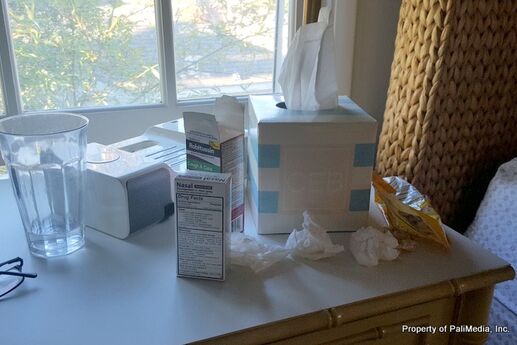The Trick to Make Your Resolutions Stick
It's that time of year again. We ring in the new year with a list of resolutions to improve our lives, but after a few weeks, good intentions fall by the wayside. If this sounds familiar, you're not alone.
According to one study, 45 percent of Americans make yearly resolutions, but only 8 percent actually achieve them But this doesn't have to be you. The secret to changing your life is not in grand gestures. Instead it's about thinking small.
The best way to achieve change is to set realistic goals," says Dr. Christos Giannoulias, a clinical instructor in sports medicine at Chicago's Loyola University. "For example, you can't be a couch potato and expect to start working out for an hour, five days a week and have it become a lasting habit."
Whether you're hoping to run a marathon, boost your energy, or improve your diet, here are expert tips on how to make small changes that deliver big results.
1. Be your own cheerleader.
A positive attitude is key to accomplishing your goals."Instead of writing an endless to-do list, how about writing a "Look what I did today list' and give yourself a pat on the back," says Debbie Mandel, author of Addicted to Stress: A Woman's 7-Step Program to Reclaim Joy and Spontaneity in Her Life. "Virtually all of us respond to a loving coach as opposed to a stern inner critic.”
2. Make it a habit.
Creating a habit is a crucial step toward making a change succeed. So, when you start a new fitness routine or diet, incorporate it into your daily routine. "Stick with your plan several days a week, for two to three weeks, and it will become habitual, just like brushing your teeth," says Giannoulias."You won't even think about it after awhile."
For example, start with a simple and doable five to ten minute bike ride each day, or add another serving of vegetables to your lunchtime meal. Gradually increase the length of your rides, or your intake of veggies over time.
3. Pair up.
Finding someone with a similar goal to yours and joining forces is a great way to succeed at your goals. "It's more enjoyable to work out with a partner who's sharing your same experience," says Giannoulias."You're responsible for each other and making sure you stick with it. Everything is easier when there is someone there pushing you to succeed."
4. Hit the road.
Looking for a quick way to get fit, de-stress and boost your energy? Try adding a daily walk to your routine. "Walking is a fantastic form of exercise," Giannoulias says. "It's easy on the joints, it doesn't involve money or memberships, and just about everyone can do it."
Walking is also a great way to de-stress, says Mandel. "When you are really upset about a conflict or deadline, take a walk in the daylight with headphones. You will decompress quickly and improve focus.
5. Count it down.
Many people begin the new year resolving to shed pounds, but succeeding is not so easy. Being aware of the number of calories you consume is one of the easiest ways to slim down. "Everyday caloric intake is the most important factor when it comes to why people gain or lose weight," Giannoulias says. "If you stick to the recommended balance of fats, proteins and carbohydrates and the number of calories appropriate for your age and gender, it will be easier to lose and maintain weight.
6. Put yourself first.
It's easy to lose track of yourself when you're devoted to meeting the needs of your kids, job or partner. "The things that provide the most amount of stress in your life -- work, family, finances -- you can't eliminate entirely," says Giannoulias. "So you need to learn how to set aside a period of time every day where you focus on you. This will help deflate stress."
Mandel recommends adding this "me time" gradually. "Start by shedding one unnecessary item -- like doing laundry every day -- from your to-do list. Make a mental note of how that makes you feel," she says. Then next week shed another task. Use this new-found time just for you. There is great productivity in rest, says Mandel. "You will come back feeling even better."
Photo by Elijah Hiett on Unsplash
Like this article? Get more by following us on Facebook at Beauty & Confidence.






